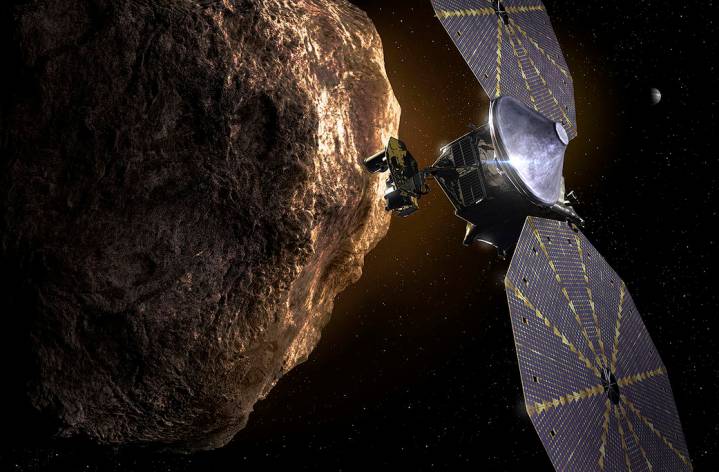Engineers have been working to fix a problem with a NASA spacecraft, Lucy, which launched in October 2021 and is on its way to visit the Trojan asteroids near Jupiter.
The problem is with one of Lucy’s large, round solar arrays. The spacecraft has two such arrays that collect energy from the sun, one of which deployed as expected, and the other of which experienced issues deploying. The arrays should have opened up and locked into place, but one of them failed to latch into place. Subsequent investigations found that the array had deployed to about 345 of 360 degrees.

The good news was that even not fully deployed, the arrays were still collecting enough power for the spacecraft to continue its journey. The bad news was the team’s concern that when the spacecraft needed to fire its main engines, the array might be damaged by the forces.
In April, NASA announced that the Lucy team had a plan to address the issue. The solar arrays were pulled into place by a motor that is attached to a lanyard, which pulls the array out into its circular shape during deployment. The lanyard seemed to have become snagged on the array which didn’t fully deploy. So the idea was to use both the primary motor and the backup secondary motor together to put more force onto the lanyard to try to unsnag it and latch the array into place.
The team tried this for the first time on May 9, operating both motors. This worked to reel in some of the lanyards, but the motors can only be operated for a short time to prevent them from overheating. The team ran this same operation again on May 12, which tensioned the lanyard further, as they hoped.
On May 26, with the lanyard now under tension and holding the array in place, they tried to fully deploy the array again. They didn’t manage to latch the array this time, though it did deploy further. They did so again on June 2, once again deploying more of the array but still not latching in place.
This process is rather painstaking, but progress is being made which is good news for the mission. NASA also says that the progress being made here will help keep the array more secure, even if they aren’t able to latch it in place as would be ideal.
“The team has several more opportunities to repeat these deployment commands,” NASA wrote in an update. “While there is no guarantee that additional attempts will latch the array, there is strong evidence that the process is putting the array under more tension, further stabilizing it. Even if the array does not ultimately latch, the additional stiffening may be enough to fly the mission as planned.”



